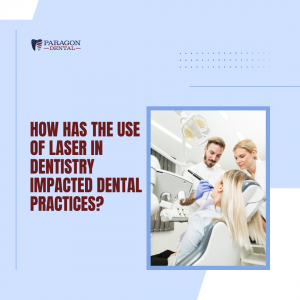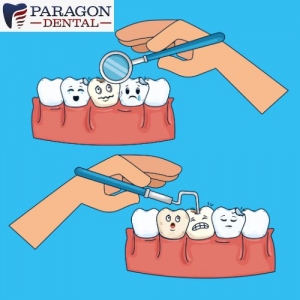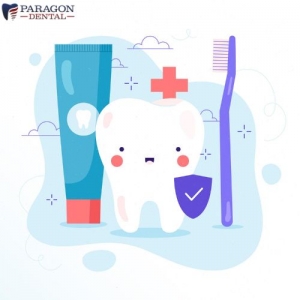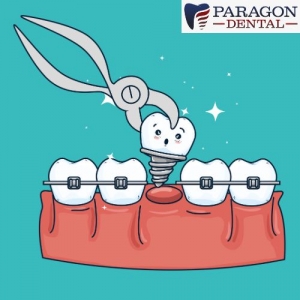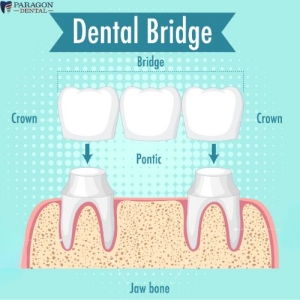Are you tired of dealing with stubborn tooth stains that keep you from flaunting your perfect smile? Look no further! Welcome to the second installment of our blog series dedicated to helping you achieve a brighter and more radiant smile.
In our previous blog post, we delved into the intriguing causes behind tooth stains, examining the factors that can leave our teeth looking less than flawless. If you haven’t had the chance to explore that post yet, you can find it here.
In this blog, we shift our focus to the treatment options available for tooth stains. We understand the impact that discoloration can have on your self-confidence, and we’re here to provide you with invaluable insights.
So, join us on this journey as we explore these six remarkable treatment options that can transform your smile and help you bid farewell to those pesky tooth stains.
Treatment Options for Tooth Stain Removal:
Tooth stains come in various forms, ranging from surface discoloration to deep-seated stains. Consequently, a range of treatment options exists to address these different types of stains.
The basic approach in stain treatment involves either lightening them or hiding them with a layer on top.
Scaling: Scaling is a common dental procedure used to remove accumulated plaque, tartar, and surface stains from the teeth.During the scaling process, a dental professional uses specialized instruments known as scalers to gently scrape and remove the plaque and tartar buildup that cannot be removed through regular brushing and flossing.
Scaling not only improves the appearance of the teeth by reducing surface stains but also plays a vital role in preventing gum disease and maintaining overall oral health. Hence, it serves as the crucial first step before any tooth whitening procedure.
Bleaching: Bleaching is a popular method for whitening and brightening teeth, effectively reducing stains and enhancing the natural color of the teeth. This treatment involves the application of a bleaching agent that penetrates the tooth, breaking down pigmented molecules responsible for discoloration. Two common approaches to bleaching are in-office bleaching and home bleaching.In-office bleaching is performed by a dental professional who applies a high concentration of hydrogen peroxide directly to the teeth during a single visit, delivering fast results. On the other hand, home bleaching involves using a custom-made tray filled with a lower concentration of carbamide peroxide or hydrogen peroxide. The tray is worn for several hours or overnight, offering convenience and flexibility, but it may require multiple applications over a few weeks to achieve desired outcomes.
To achieve optimal results with at-home night bleaching, avoid or minimize the consumption of coffee, tea, red wine, tobacco, and dark-colored foods during the treatment period.
It’s important to note that sensitivity can be a common complication of bleaching. To tackle this, brushing with toothpaste containing potassium nitrate for two weeks prior to starting the bleaching process can help minimize sensitivity.
Microabrasion: It is recommended when bleaching fails to effectively remove stubborn stains.
It removes a thin layer of the tooth using mild abrasives and acids, hence eliminating these stubborn stains, resulting in a smoother and brighter tooth surface.
Tooth Bonding: It involves applying a tooth-colored resin material to the surface of stained teeth. It effectively masks stains and can be completed in a single visit to the dentist. It is recommended for individuals with minor tooth stains or discoloration.
Dental veneers: These are like thin protective covers that are specially made to fit over the front surface of your teeth. Veneers are a great option if you have stubborn and severe stains on your teeth that don’t go away with other treatments.
They give you long-lasting and natural-looking results.
Steps in getting a dental Veneer:
Tooth Preparation: A small layer of tooth is gently removed from the front surface of the tooth.
Impressions: Impressions or digital scans of your teeth are taken to create custom-made veneers.
Temporary Veneers: Temporary veneers may be placed while the permanent ones are being fabricated.
Bonding: The dentist carefully adheres the veneers to the front surface of your teeth using dental adhesive.
Final Adjustments & Polishing: The dentist trims and shapes the veneers to ensure a comfortable and natural fit. Then the veneers are polished to achieve a smooth and aesthetically pleasing appearance.
Dental crowns: These are customized caps, offer protection and a natural-looking appearance by matching the shape, size, and color of your teeth. They are placed over damaged or decayed teeth, providing strength and restoring functionality. If you have severely stained teeth that cannot be effectively treated with other methods due to a lack of strength, dental crowns can be an excellent solution.
The steps for getting dental crowns are similar to veneers, except that in the case of dental crowns, all sides of the tooth are shaped and shortened to accommodate the crown, whereas, for veneers, only the front portion of the tooth is prepared.
Resin Infiltration: It is a technique used to treat white spots or patches on the teeth caused by demineralization.
During the procedure, a low-viscosity material is applied to the affected tooth. This material can flow into the tiny pores of the outer white layer of the tooth, filling them up and making the white spots less visible.
The material used is usually transparent, so it blends in with the rest of the tooth and makes it look more natural. The procedure is quick and usually doesn’t cause any pain.
Conclusion:
Consulting with a dental professional is crucial to determine the most suitable treatment approach, ensuring a brighter, more confident smile that meets your aesthetic goals. Remember, maintaining good oral hygiene and regular dental check-ups are essential for long-lasting results and overall oral health.
Need effective treatments to address tooth staining in Modesto?
At Paragon Dental, we strive to provide high-quality dental care to our patients.
Call us now for an appointment at (209) 548-0100, or come by our clinic at Paragon Dental, 1108 Oakdale Road, Suite A, Modesto, California 95355.

